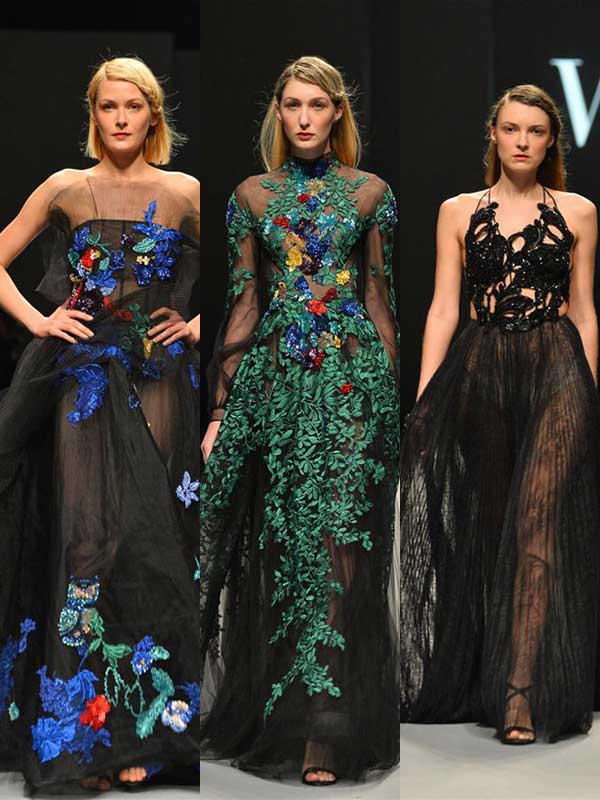The ongoing Shanghai Fashion Week is showcasing the fall and winter collections of 70 different Chinese designers. With young Chinese designers appearing on local and international stages, "Made in China" has become somewhat of a trend within the industry.
Big color blocks, various patterns, and unconventional details, all of these are very different from years ago, when Chinese designers were largely using Chinese elements.
14 Chinese designers have presented their latest collections at 2016 Shanghai Fashion Week in the past two days. Many of these designers are in their late 20s or early 30s and have studied overseas. Their clothing lines are young and full of character.

SHANGHAI, April 12, 2016 (Xinhua) -- Models present fashion creations of We Couture 2016 Autumn/Winter Collection during the Shanghai Fashion Week in Shanghai, east China, April 11, 2016. (Xinhua/Guo Changyao)
''This series was inspired by the movie "Under the Skin", our favorite artists David Bowie and Piet Mondrian. We didn't follow the tradition to use the same material for every piece," said Alex Liu, designer, Laboron.
"Instead, we chose to use different fabrics that we normally see in life. And we want the wearer to feel edgy and cool. ''
''I really care about fabrics. I like how the designers used velvet and silk. And they added details on the sleeves and sweaters, which breakthrough the conventional look,'' said Mayao, Stylist.
Zhang Chenxing, who works for a boutique store in downtown Xuhui District, says when the shop chooses designers, they look for originality first. Zhang said copying others used to be an issue in the Chinese design industry, but that it's getting better now.
''I think in the past, a lot of Chinese designers are emphasizing on the Chinese characteristics, and that's the part I'm kind of hating, but recently, this kind of phenomena is just disappeared. I'm very willingly to see a lot of new designers doing very vivid stuff, and I think that's a very good point,'' she said.
Zhang said customers are willing to buy Chinese designs with prices similar to top-tier global fashion brands as the market gradually learns to appreciate the originality and the efforts of designers.
However, Zhang said that the way China organizes fashion week is very different from other countries, where they are a major event for people in the industry to meet and discover the trends for the coming seasons.
''We know that there are four important fashion weeks in the world, but in China, solely in China, there are a lot of fashion weeks. Fashion week is supposed to be a hub for all the strength in the industry, all the forces, like the media, the designers, and for the buyers," she said.
"To some extent, it's more like a touristic spot for Shanghai Fashion Week. We see that there are "Huangniu" (scalpers) selling and buying tickets from the audiences. It is supposed to be a business event. But in Shanghai it's more like an event for public or tourists. That's the funny point I think. ''
Shanghai Fashion Week continues until Saturday at Xintiandi. Dozens more runway shows and Q&A sessions with designers will be held across the city.















